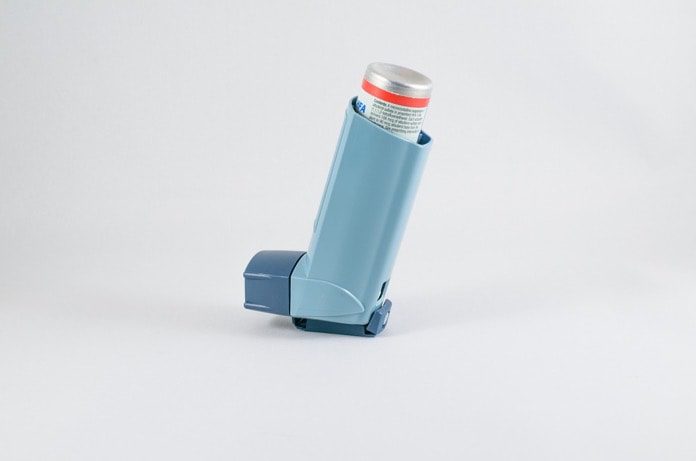A review study compiled information on the role of the gastrointestinal and respiratory tract microbiomes in modulating the immune responses in asthma patients.
The human body is home to a huge number of microbes, including bacteria, viruses, and fungi. It is estimated that over 100 trillion microorganisms colonize the human body, mainly the skin and mucosal surfaces, such as the gastrointestinal and respiratory tracts. This collection of microbes that develop intricate interactions with their host is called the microbiome. The establishment of the human microbiome begins in the first days of the life of newborns and continues to about the third year of life. It is affected by factors like antibiotic use, birth mode, nutrition, and biodiversity in the home and surrounding environment. Today, it is well known that delays or imbalances in the establishment of a stable microbiome are closely related to a higher risk of allergies and asthma later in life.
There is a very complex network of immunological interactions that take place in the mucosal sites in order to guarantee that the immune system is able to distinguish between “good” and “bad” microbes. These highly controlled mechanisms must lead to immune tolerance to the microbiome, or effective attacks against pathogens when necessary. It is clear today that imbalances or disruptions in the interactions between the microbiome and immune cells result in exacerbated allergic responses and asthma in both animal models and humans.
A Swiss study, published in January 2018 in the Asthma Research and Practice journal, examines the presence of an imbalanced microbiota of the gut and lungs in patients with asthma and summarizes current approaches of microbial-based therapies for these individuals.
Immune Mechanisms Influenced by the Microbiome
Studies have shown that several bacteria species have direct immunoregulatory effects in the mucosal sites. The interactions are often between components of the bacteria cell wall or their metabolites (substances produced during the metabolic reactions within the bacteria) and immune cells, mainly lymphocytes. Some groups of bacteria can induce a regulatory pattern of immune response, with anti-inflammatory properties, while others trigger the production of pro-inflammatory molecules that lead to enhanced inflammation. Therefore, major imbalances in the populations of certain bacteria groups in mucosal sites can result in a higher propensity to develop asthma, allergies, and other inflammatory diseases.
The Role of the Gut Microbiome in Asthma
The gut microbiota has almost 1000 species of bacteria, making it the largest in the human body, and it can influence the immune response at distant sites, for instance, the lungs. At three years old, the gut microbiome is completed and its development is influenced by exposure to environmental factors such as living in a microbial rich environment (farms), antibiotic use in pregnancy, and food diversity. Children from farms are less likely to have asthma later in life. Birth mode (caesarian or natural) also influences the development of the microbiota in the newborn, as babies from vaginal delivery have in their gut microbiome a species of bacteria that metabolize fiber and induces systemic anti-inflammatory effects, which is not seen in babies delivered by C section.
Role of the Respiratory Microbiome in Asthma
It was previously thought that healthy human lung tissue was sterile, but in the last decade, studies have shown that the respiratory mucosa has its own microbial population. Higher numbers of microorganism are found in the upper respiratory tract, while the trachea and lungs have a much sparser microbiota. There is evidence that some bacterial populations are more present in upper and lower airways of asthma and Chronic Obstructive Pulmonary Disease (COPD) adults and asthmatic children. As it happens with the gut microbiota, the airways microbiome also develops very early in life and is influenced by the number of microbes in the environment, age, health status, and birth mode. Children raised in farms are exposed to a higher microbial diversity in house dust, which leads to higher nasal microbiome diversity and less risk of asthma.
Microbiome Strategies for Asthma Prevention, Treatment, and Management
Scientists have been analyzing the effects of restoration of gut and lung microbiomes through the use of probiotics and prebiotics in asthmatic patients. Probiotics, commonly found in yogurt, are the “good” bacteria that help control growth of harmful bacteria, while prebiotics are carbohydrates that cannot be digested by the human body and constitute food for probiotics. One study suggests that a combination of probiotics, fish oils, and vegetable extracts might lead to improved pulmonary function in asthmatic children. However, due to the lack of robust evidence, the use of prebiotics or probiotics is not yet recommended for treatment or prevention of asthma.
Future Perspectives
Although it is clear that the microbiota strongly influences host immune maturation, and that imbalances in gut and lung microbiomes are intimately associated with asthma, the molecular basis for immunoregulatory mechanisms is yet to be described. Moreover, many studies with humans must still be conducted in the future, as the majority of studies, so far, have used animals as models and the results might not be applicable to humans.
Written by Gustavo Caetano, B.Sc., M.Sc.
References:
(1) Sokolowska M, Frei R, Lunjani N, Akdis C A, O’Mahony L. Microbiome and Asthma. Asthma Research and Practice 2018; 1-9.
(2) Smith, M W. (2012, December 12). Probiotics and Prebiotics: Ask the Nutritionist. Retrieved from https://www.webmd.com/vitamins-and-supplements/nutrition-vitamins-11/probiotics
(3) Jewell T. (2017, September 19). What Causes Dysbiosis and How Is It Treated?. Retrieved from https://www.healthline.com/health/digestive-health/dysbiosis



